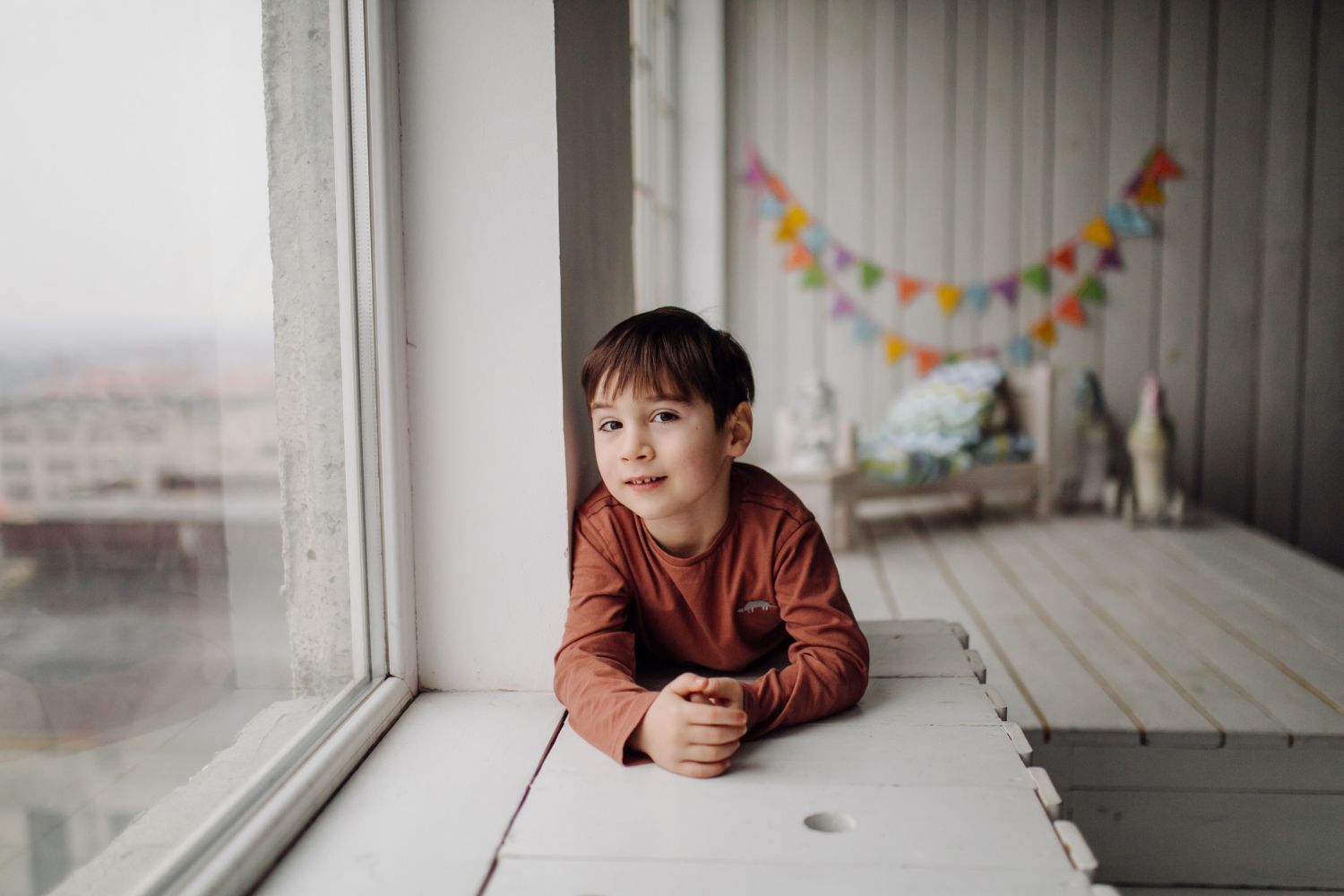Website by CWS
In-Home ABA Therapy: Home Preparation Tips and Tricks
When your child gets an autism diagnosis, it can be a lot to take in. But making sure you have a caring home environment can help your child move forward. ABA therapy is based on science. It helps children with autism learn better behaviors and important life skills. Using in-home ABA therapy lets your child stay in the comfort of home while still getting help from a trained professional. This way, many families find it works well for them. With some planning, you can make your home a good place for ABA so your child can learn, get better, and have strong results that last.
Understanding In-Home ABA Therapy
In-home ABA therapy uses the ideas of applied behavior analysis to help children with autism while they stay in their own homes. This kind of ABA therapy brings in family members so that the work done in each session also becomes part of the daily activities.
When parents know the therapy process well, they can help make sure their child feels safe and that the plan works right for them. Staying at home helps build trust between the child, the therapist, and the family. Now, let’s take a look at how ABA therapy works and what benefits it brings.
What Is ABA Therapy and How Does It Work at Home?
ABA therapy is about finding and teaching good ways to act while helping your child do less of the things that cause problems. At home, an ABA therapist comes for therapy sessions. They use simple, proven ways like behavior analysis and giving rewards, called reinforcement. There is a treatment plan for your child that fits what they can do, how old they are, and what they need to learn.
When you do therapy at home, it uses the real routines in your family’s life. It might be done during playtime, meals, or any other normal parts of the day, so learning feels more natural. Your child will get better at talking and problem-solving, and the times they act out will get fewer.
The therapist will work with the whole family, so parents know what to do too. This helps keep the child's progress going, even when a therapist is not there. The big goal of autism treatment is for your child to feel strong and to reach their fullest potential at home, where they feel comfortable. ABA therapy wants to let every child grow, learn, and do their best right where they live.
Key Benefits of In-Home ABA Therapy for Families
In-home ABA therapy gives a chance for both the child and their family members to grow together. The big advantage is that therapy happens right in the home. This helps the child use social skills in places they are always around.
ABA therapy uses positive reinforcement to help kids learn. Every day, things like bedtime, learning words at meals, or playing become good times to practice new skills. These are just simple ways to help them build skills with reinforcement.
During therapy sessions, families learn useful ways to help. Parents get real steps they can use outside of sessions to help their child more often. Siblings also join in and give important social time, which helps the whole home environment. This is a team effort where everyone helps, making big steps forward as a group.
Essential Preparation Before Starting
Preparation is very important to make sure that effective intervention works well when you start ABA therapy at home. First, get to know your child’s goals. Talk about these with their ABA therapist so you can build a treatment plan that fits your child’s needs.
Having the right resources and keeping open communication with everyone on the team can make the whole experience better. Doing these things helps people, including you and your child, get ready for real progress. Now, let’s look at the materials you need, the tools you will use, and why it matters to have goals that you and your child can both reach together.
Materials, Equipment, and Resources Needed
To make a good therapy space at home, you need to set it up well. Try having these basics for the best results:
- Visual stimuli: Use flashcards, charts, or boards that work with ABA techniques.
- Toys and sensory items: Pick fidget tools or things with texture to keep your child engaged.
- Organizational storage: Put up shelves or use containers to keep things clean and easy to find.
- Technology: Get tablets or timers that fit what you need for your child to learn.
- Comfortable furnishings: Use a good table and soft seating for your child.
There is more to it than just what you can see or touch. You should also keep up with new ways to help and talk with the therapist often. This helps you stay on track with the treatment plan made for your child. When the things you and your child need are close by, the therapy sessions can run smoothly with no breaks.
Setting Realistic Goals and Expectations
Having a clear idea about your child’s needs is key to making ABA work well. Work closely with your child’s ABA therapist to set real goals together in the treatment plan.
With parent training, you get usable ideas to help you take part more. Keeping open communication helps everyone trust each other. This also means you can talk about your worries and hopes. Your point of view becomes part of the therapy style for your child.
Start with easy goals at first. These small steps lead the way for bigger wins. When you see your child’s progress over time, it brings more hope. You can see that your work does matter. If everyone stays focused, good things will come for your child in the long run.
How to Prepare Your Home for ABA Therapy: A Beginner’s Guide
Turning your home environment into a warm and welcoming place can make optimal ABA therapy work better. When you set up a structured therapy space, you help create consistency. This also keeps distractions low, so your child can get the most out of ABA therapy.
As we go on, we will talk about some important steps. These include how to organize the therapy area and take care of safety concerns for your child and the therapist. These useful tips connect small changes in the home environment with ways to make therapy sessions go more smoothly.
Step 1: Designate and Organize a Dedicated Therapy Space
Having a fixed therapy space helps the child focus and brings more success. Try these tips:
- Avoid distractions: Pick a quiet place in the home away from household interruptions.
- Declutter: Keep the area clean and tidy. This will help lower too much noise from things.
- Consistency: Set up the space the same way each time to help with the child’s routine.
- Comfortable seating: Choose seats that are good for both the child and the therapist.
- Promote familiarity: Add toys or calming items that your child likes.
Making a room just for this use helps set a routine. The child will trust this time and place. This makes therapy space sessions quicker, shows better results, and helps with your child’s success.
Step 2: Minimize Distractions and Create a Safe Environment
Safety and focus both matter a lot in ABA sessions. You can try some of the tips in the table below:
| Distraction Type | Reducing Strategies |
|---|---|
| Noise | Turn down the TV or music, or use noise-cancelling tools. |
| Visual clutter | Keep things simple and cut down on mess or too many items. |
| Household interruptions | Give tasks to other people or plan sessions when it’s more quiet at home. |
| Environmental hazards | Lock up dangerous things and keep sharp objects away. |
Building a safe environment helps your child be in a good place and secure for them. Simple changes can make ABA therapy work better by cutting out clutter, noise, and interruptions.
Conclusion
To sum up, getting your home ready for in-home ABA therapy is an important step. It helps make the experience better for both your child and the therapist. Set up a special therapy space in the home. Try to cut down on things that may take your child's focus away. Set goals that are real for your child and you. These things help create a good place for learning and growth in ABA. They also help your child feel safe and comfortable during each therapy session. Every small thing you do now will help with your child's progress. If you want advice that is made just for you, get in touch with our experts for a free talk. This will help you begin ABA in the right way.
At Divine Steps ABA, we believe that effective therapy begins with a strong foundation, and that starts in the comfort of your own home. While this article offers essential tips for preparing your space, our expert team goes beyond advice to become your dedicated partner in in-home ABA therapy. We work hand-in-hand with your family to create a customized therapeutic environment that is not only organized but also perfectly tailored to your child's needs, fostering natural learning and skill generalization. Choose Divine Steps ABA to ensure your child’s journey starts on the right foot, with a compassionate team committed to guiding their divine steps toward success in the place they feel most secure.
Frequently Asked Questions
How can I make my child feel comfortable with a new therapist at home?
Build a good connection with the ABA therapist by having open communication. Let your child meet the therapist during home activities they know well. This can help lower worry and make them feel safe. Let them interact in therapy sessions so the ABA therapist can get to know what your child needs. When the family gets involved, it helps the change go better for everyone.
What should I do if siblings are present during ABA sessions?
Get siblings to join in on certain ABA therapy sessions to help your child with autism spectrum disorder build better social skills. As their caregivers, you should show them the right ways to support them during ABA therapy. Try to keep the home environment calm and free from too many breaks or distractions. This will help make each ABA therapy session work better.
How much time should be allocated for in-home ABA therapy?
Describe the item or answer the question so that site Most treatment plans are made to fit your child’s unique therapy sessions and daily activities. Talk with the ABA therapist about what will work best. The right plan may be between 20 and 40 hours each week, depending on your child’s needs and goals in ABA. who are interested get more information. You can emphasize this text with bullets, italics or bold, and add links.
Sources:
https://www.autismspeaks.org/applied-behavior-analysis
https://www.appliedbehavioranalysisedu.org/in-home-care/
https://www.autismspeaks.org/autism-diagnosis
https://moveupaba.com/blog/how-to-prepare-home-for-in-home-aba-therapy/
https://www.autismparentingmagazine.com/best-prepare-for-aba-therapist/




